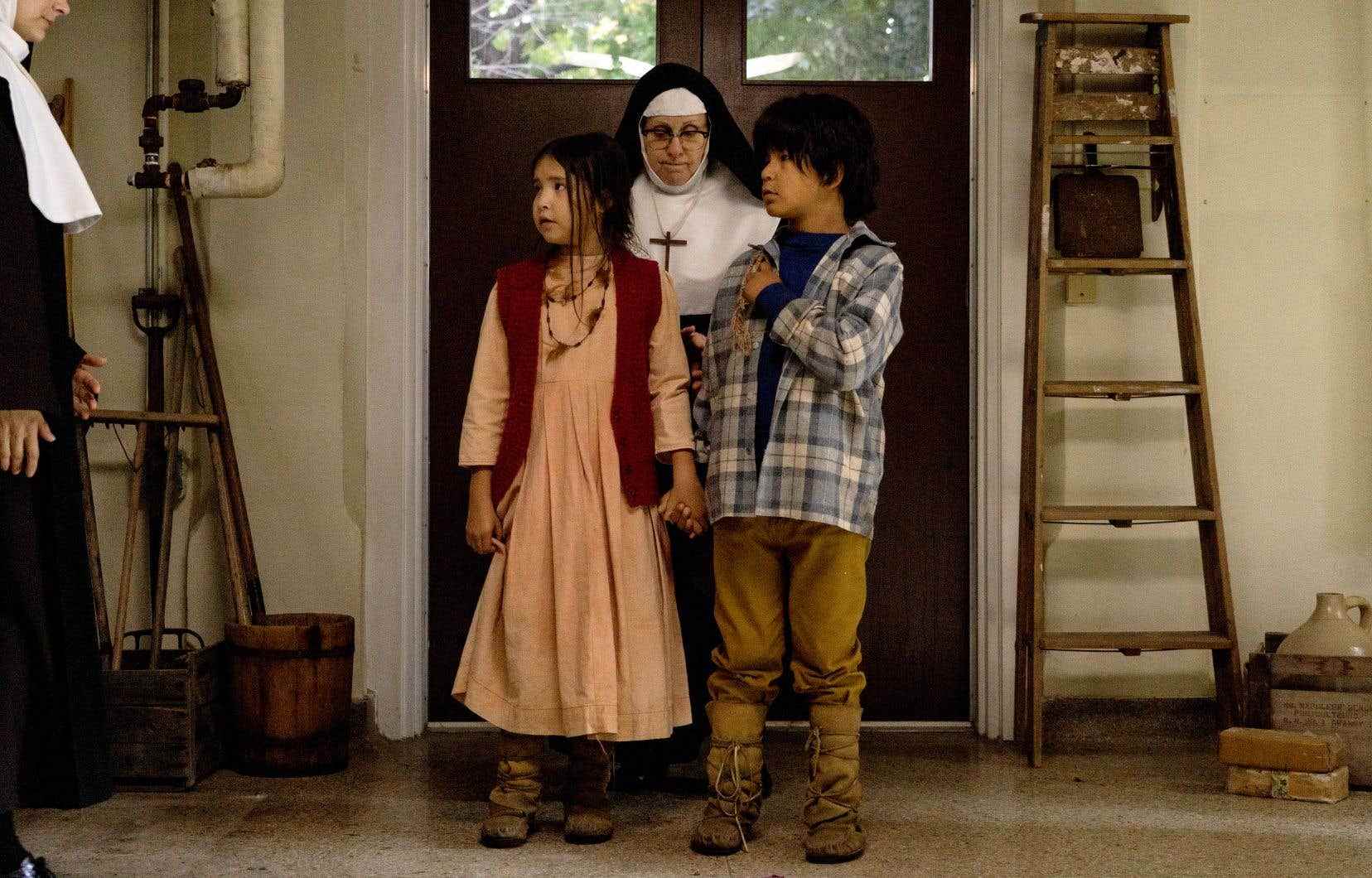It is often said that you have to see it to believe it. So Sonia Bonspille Boileau showed it to us. The Mohawk director presented, on Tuesday, a television series on the history of residential schools for Aboriginals, For you Florawhich will appear on Radio-Canada and was produced in collaboration with APTN (Aboriginal Peoples Television Network).
This series tells the story of Flora, a little Anishinaabe girl who is taken from her parents to be placed in boarding school, and that of her brother, Rémi. Magnificently played by two young native actors, Flora and Rémi as children convey all the vulnerability and candor of those who have been torn from their families, to be planted in an environment where everything was culturally foreign to them.
This is the first fiction series produced in French by an Aboriginal woman at Radio-Canada. And this is undoubtedly the first time that we will see so many native actors on the French-language antenna of state television.
When the series was launched at the Cinéma du Musée, many people were brought to tears at the mention of this dark period in Aboriginal history. Many Aboriginal people reminisced about their own experiences at residential school. This is the case of Madeleine Basile, Atikamekw from La Tuque who was placed at the boarding school in Pointe-Bleue (today Mashteuiatsh) for ten years, and who remembered the brushes with which she was rubbed vigorously, as if to make her naturally dark skin becomes lighter.
“We were taken from our life in the forest with my family, my grandparents, my mother, she recalls. Before residential schools, we were fine. I come from a family that was very well structured. We lived on the territory, we hunted. We are still hunter-gatherers. I had just turned six and they came to pick us up by bus. We went to boarding school. It took all day to get to Pointe-Bleue. And at boarding school, I was separated from my big sisters, my brothers, my little sister…”
A Quebec story
Sonia Bonspille Boileau says she was inspired by the story of her grandfather, who was placed in a boarding school in northern Ontario with several members of his family. “He saw his older sister for the first time, from afar. We introduced him remotely and he was not allowed to interact with her, ”she says. The director absolutely insisted that the action of the series take place in French, in particular because she notes that it is in Quebec that the history of the residential schools is the least known. The story therefore takes place in Abitibi, and the Aboriginal characters are Anishinabe and they exchange, when they can, in Anishinabemowin.
“I am very moved to hear my daughter speak anichinabémowin”, slips Carlos Kistabish, the father of Sara Rankin Kistabish, who plays the role of Flora as a child. He himself says he only speaks 40% of his parents’ language, while Sara’s mother, Sally Rankin, also Anishinaabe, says she can read the language, but not speak it.
Two elders from the Anishinaabe community of Pikogan, Norman Kistabish and Emily Mowatt Kistabish, acted as on-set language coaches and taught the actors the basics of Anishinabemowin. The series also includes a dubbed version in this indigenous language.
We were taken from our life in the forest with my family, my grandparents, my mother
On Tuesday, Sonia Bonspille Boileau specified that several residential school survivors she met had told her that “not everyone was mean” at the residential school. So she wanted to take this into account in the treatment of the series, even if she emphasizes that even the benevolent characters were linked to the system of assimilation put in place.
The first episodes of the series, unveiled on Tuesday, testify to a remarkable subtlety, without dodging the great debates of the hour, including police brutality and racial profiling.
Still, among the Aboriginals who were in attendance at the time of the press release, there was great satisfaction at finally seeing history as they perceive it brought to the screen.
Represent all nations
“The actors came from many different nations,” says Sonia Bonspille Boileau. Although the story of For you Flora takes place in Abitibi, she wanted “all the other nations who suffered this, the Atikamekw, the Mohawks, the Crees and the Innu” to feel represented.
For Innu actor Charles Buckell-Robertson, who plays Rémi at the age of 30, For you Flora will be the first opportunity to watch an entire television series, since it echoes its reality.
A series of private viewings of the series will take place in the various Anishinaabe communities of Abitibi. “For those who don’t want to watch it alone at home, who would rather watch it with support, in a group or as a family,” continues Sonia Bonspille Boileau.
Slowed down by the pandemic, the production of the series of six one-hour episodes had begun well before the discovery, a year ago, of the remains of the remains of Aboriginal children at the Kamloops residential school.
In a previous version of this text, the Cinéma du Musée was referred to as the cinema of the Montreal Museum of Fine Arts.
